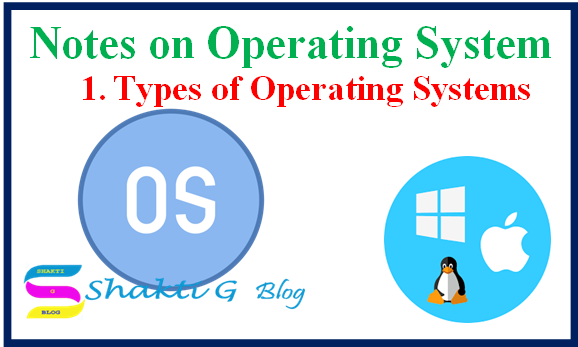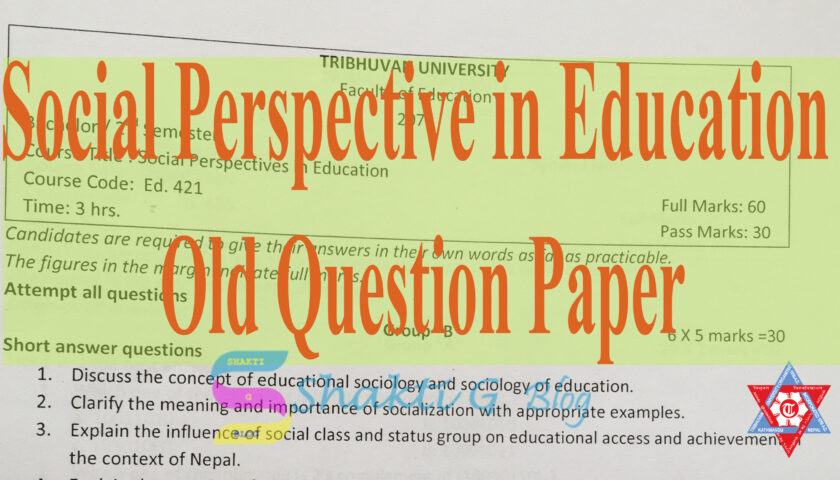What is an Operating System? and History of Operating System
If we just build a computer, using its basic physical components, then we end up with a lot of assembled metal, plastic, and silicon. In this state the computer is useless. To turn it into one of the most useful tools we need software. We need applications that allow us to write letters, write software, perform numerical modeling, calculate cash flow forecasts, etc. But, if all we have are just the applications, then each programmer has to deal with the complexities of the hardware. If a program requires data from a disc, the programmer would need to know how every type of disc worked and then be able to program at a low level in order to extract the data. In addition, the programmer would have to deal with all the error conditions that could arise. For example, it is a lot easier for a programmer to say READ NEXT RECORD than have to worry about: spinning the motor up, moving the read/write heads, waiting for the correct sector to come around, and then reading the data.
It was clear, from an early stage in the development of computers, that there needed to be a “layer of software” that sat between the hardware and the software, to hide the user from such complexities, and to hide the ‘breakable’ parts of the computer from human error or stupidity. Thus we can define an operating system as “It is the system software that acts as an interface between computer hardware and users and provides an easy interface to the users by hiding underlying complexities of computer hardware “
Two views of an operating system
Now we are going to look at two views of an operating system. In another word, we can categorize functions of an operating system into two categories
Operating System as Resource Manager: One view considers the operating system as a resource manager. In this view, the operating system is seen as a way of providing the users of the computer with the resources they need at any given time. Some of these resource requests may not be able to be met (memory, CPU usage, etc.) but, the operating system is able to deal with problems such as these. For example, consider the situation where more than one process is requesting CPU. If we have a single CPU it can be assigned to only one process at a time. OS is responsible for when to provide CPU to which process called CPU scheduling. Similarly, other resources are also managed by the CPU.
OS as Extended Machine: Another view of an operating system sees it as a way of not having to deal with the complexity of the hardware. If we have an operating system, we can read data easily from the disc by issuing a command such as READ. But, if we don’t have OS we have to deal with low-level complexities f disc to read data from it. We should know whether the floppy disc is spinning, what type of recording method we should use, What error codes are used etc etc. The operating system hides all these complexities from us simple-minded users and provides a convenient interface. So in this view of the machine, the operating system can be seen as an extended machine or a virtual machine.
History of Operating System
In this section, we take a brief look at the history of operating system which is almost the same as looking at the history of computers. You are probably aware that Charles Babbage is attributed to designing the first digital computer, which he called the Analytical Engine. It is unfortunate that he never managed to build the computer as, being of a mechanical design; the technology of the day could not produce the components to the needed precision. Of course, Babbage’s machine did not have an operating system but would have been incredibly useful all the same for its era for generating nautical navigation tables.
First Generation (1945-1955): Like many developments, the first digital computer was developed due to the motivation of war. During the Second World War, many people were developing automatic calculating machines. These first-generation computers filled entire rooms with thousands of vacuum tubes. Like the analytical engine they did not have an operating system, they did not even have programming languages and programmers had to physically wire the computer to carry out their intended instructions. The programmers also had to book time on the computer as a programmer had to have dedicated use of the machine.
Second Generation (1955-1965): Vacuum tubes proved very unreliable and a programmer, wishing to run his program, could quite easily spend all his/her time searching for and replacing tubes that had blown. The mid-fifties saw the development of the transistor which, as well as being smaller than vacuum tubes, was much more reliable. It now became feasible to manufacture computers that could be sold to customers willing to part with their money. Of course, the only people who could afford computers were large organizations who needed large air-conditioned rooms in which to place them. Now, instead of programmers booking time on the machine, the computers were under the control of computer operators. Programs were submitted on punched cards that were placed onto a magnetic tape. This tape was given to the operators who ran the job through the computer and delivered the output to the expectant programmer.
As computers were so expensive methods were developed that allowed the computer to be as productive as possible. One method of doing this (which is still in use today) is the concept of batch jobs. Instead of submitting one job at a time, many jobs were placed onto a single tape and these were processed one after another by the computer. The ability to do this can be seen as the first real operating system.
Third Generation (1965-1980): The third generation of computers is characterized by the use of Integrated Circuits as a replacement for transistors. This allowed computer manufacturers to build systems that users could upgrade as necessary. Up until this time, computers were single-tasking. The third generation saw the start of multiprogramming. That is, the computer could give the illusion of running more than one task at a time. Being able to do this allowed the CPU to be used much more effectively. When one job had to wait for an I/O request, another program could use the CPU. The concept of multiprogramming led to a need for a more complex operating system. One was now needed that could schedule tasks and deal with all the problems that this brings. In implementing multiprogramming, the system was confined by the amount of physical memory that was available (unlike today where we have the concept of virtual memory). Another feature of third-generation machines was that they implemented spooling. This allowed the reading of punch cards onto the disc as soon as they were brought into the computer room. This eliminated the need to store the jobs on tape, with all the problems this brings. Similarly, the output from jobs could also be stored in the disc, thus allowing programs that produced output to run at the speed of the disc, and not the printer.
Although compared to first and second-generation machines, third-generation machines were far superior but they did have a downside. Up until this point, programmers were used to giving their job to an operator and watching it run. This problem led to the concept of time-sharing. This allowed programmers to access the computer from a terminal and work in an interactive manner. Obviously, with the advent of multiprogramming, spooling and time-sharing, operating systems had to become a lot more complex in order to deal with all these issues.
Fourth Generation (1980-present): The late seventies saw the development of Large Scale Integration (LSI). This led directly to the development of the personal computer (PC). These computers were (originally) designed to be single-user, highly interactive, and provide graphics capability. One of the requirements for the original PC produced by IBM was an operating system and, Bill Gates supplied MS-DOS on which he made his fortune. In addition, mainly on non-Intel processors, the UNIX operating system was being used. It is still (largely) true today that there are “mainframe” operating systems (such as VME which runs on ICL mainframes) and “PC” operating systems (such as MS-Windows and UNIX), although the distinctions are starting to blur. Mainly, we can say that Graphical User Interface (GUI) became popular in 3rd generation computers.
Fifth Generation (Sometime in the future): If you look through the descriptions of the computer generations you will notice that each has been influenced by new hardware that was developed (vacuum tubes, transistors, integrated circuits, and LSI). The fifth generation of computers may be the first that breaks with this tradition and the advances in software will be as important as advances in hardware. One view of what will define a fifth-generation computer is one that is able to interact with humans in a way that is natural to us. No longer will we use mice and keyboards but we will be able to talk to computers in the same way that we communicate with each other. In addition, we will be able to talk in any language and the computer will have the ability to convert to any other language. Computers will also be able to reason in a way that imitates humans. Just being able to accept (and understand!) the spoken word and carry out reasoning on that data requires many things to come together before we have a fifth-generation computer. For example, advances need to be made in AI (Artificial Intelligence) so that the computer can mimic human reasoning. It is also likely that computers will need to be more powerful. Maybe parallel processing will be required. Maybe a computer based on a non-silicon substance may be needed to fulfill that requirement (as silicon has a theoretical limit as to how fast it can go). This is one view of what will make a fifth-generation computer. At the moment, as we do not have any, it is difficult to provide a reliable definition.




